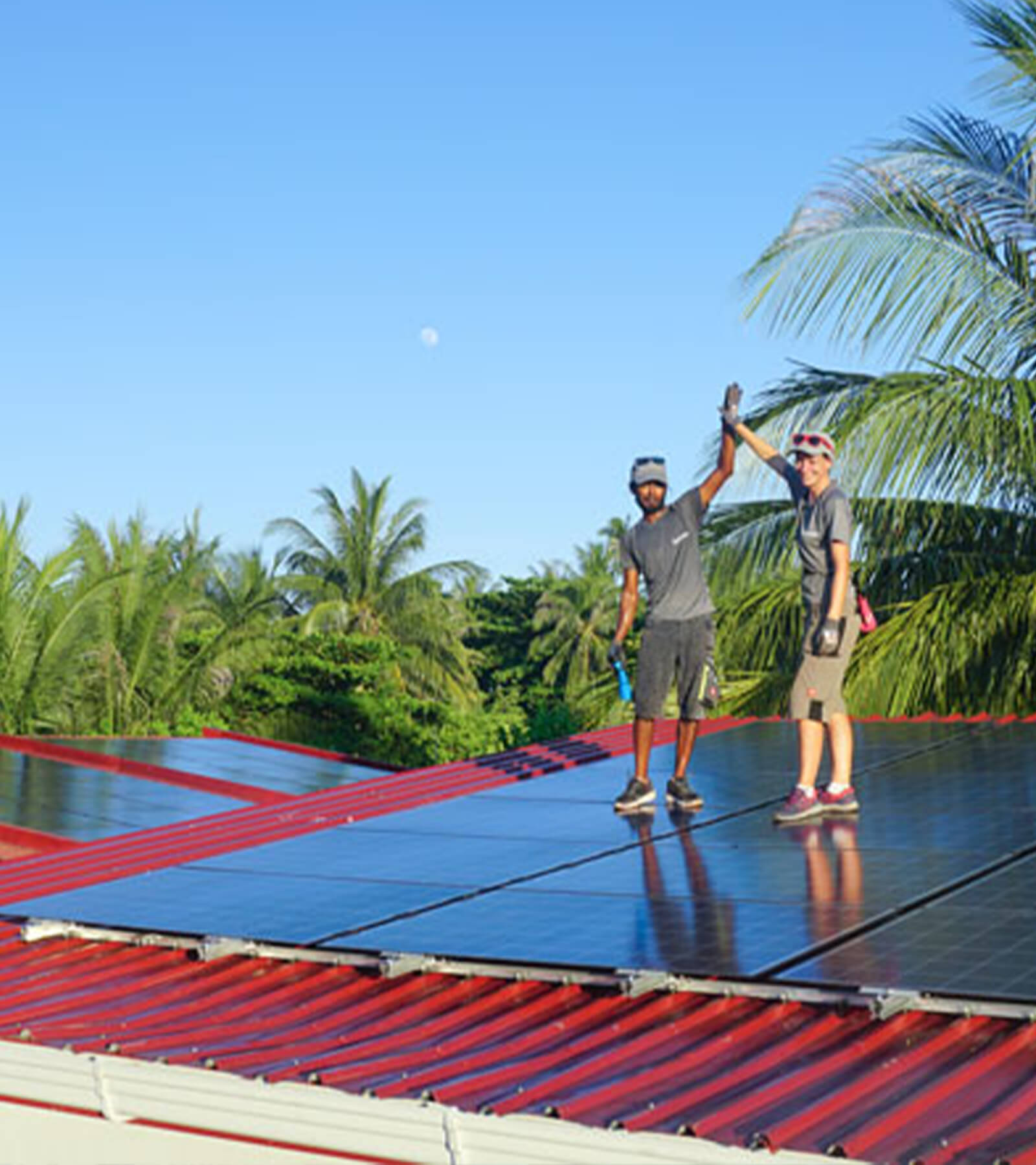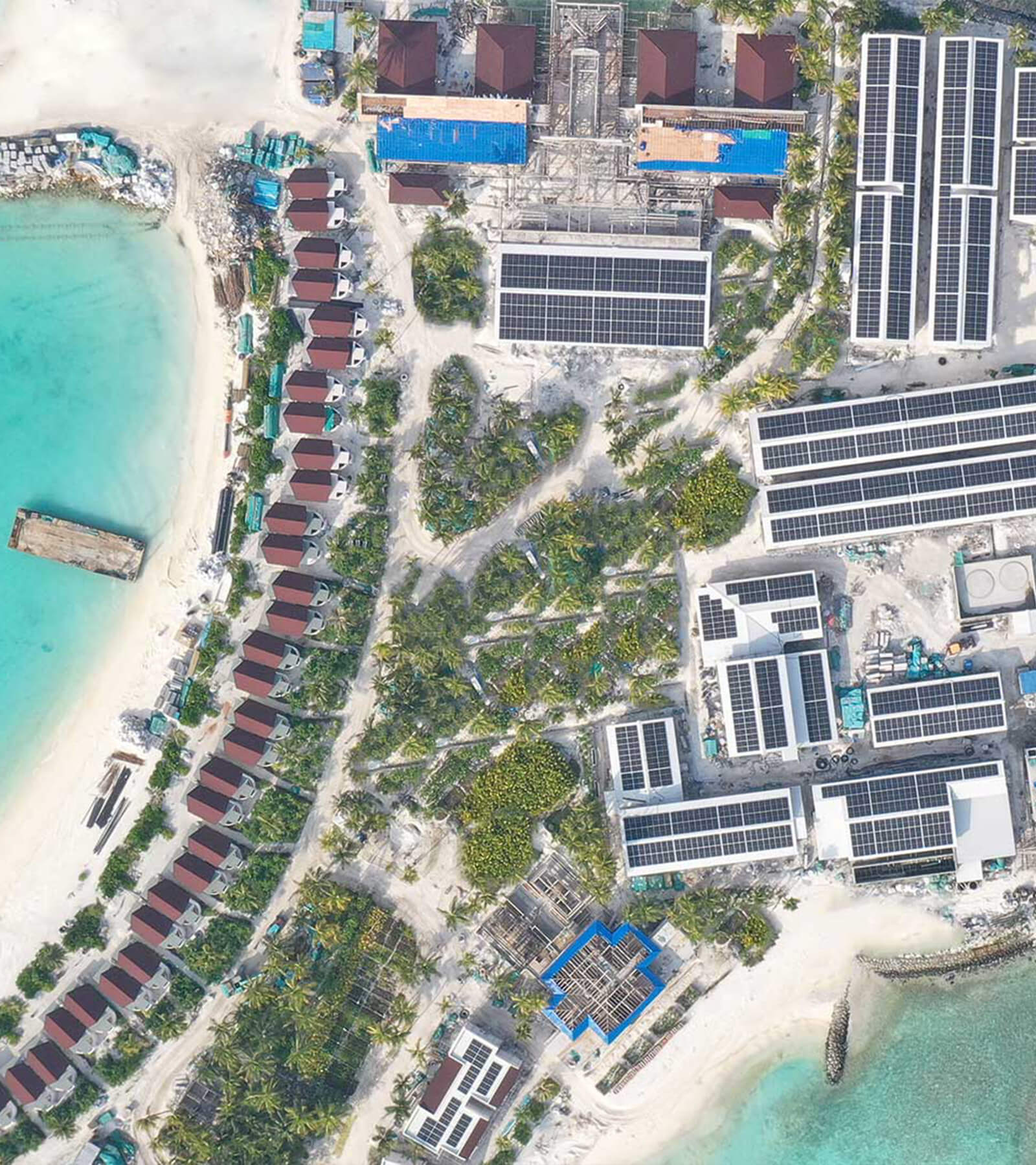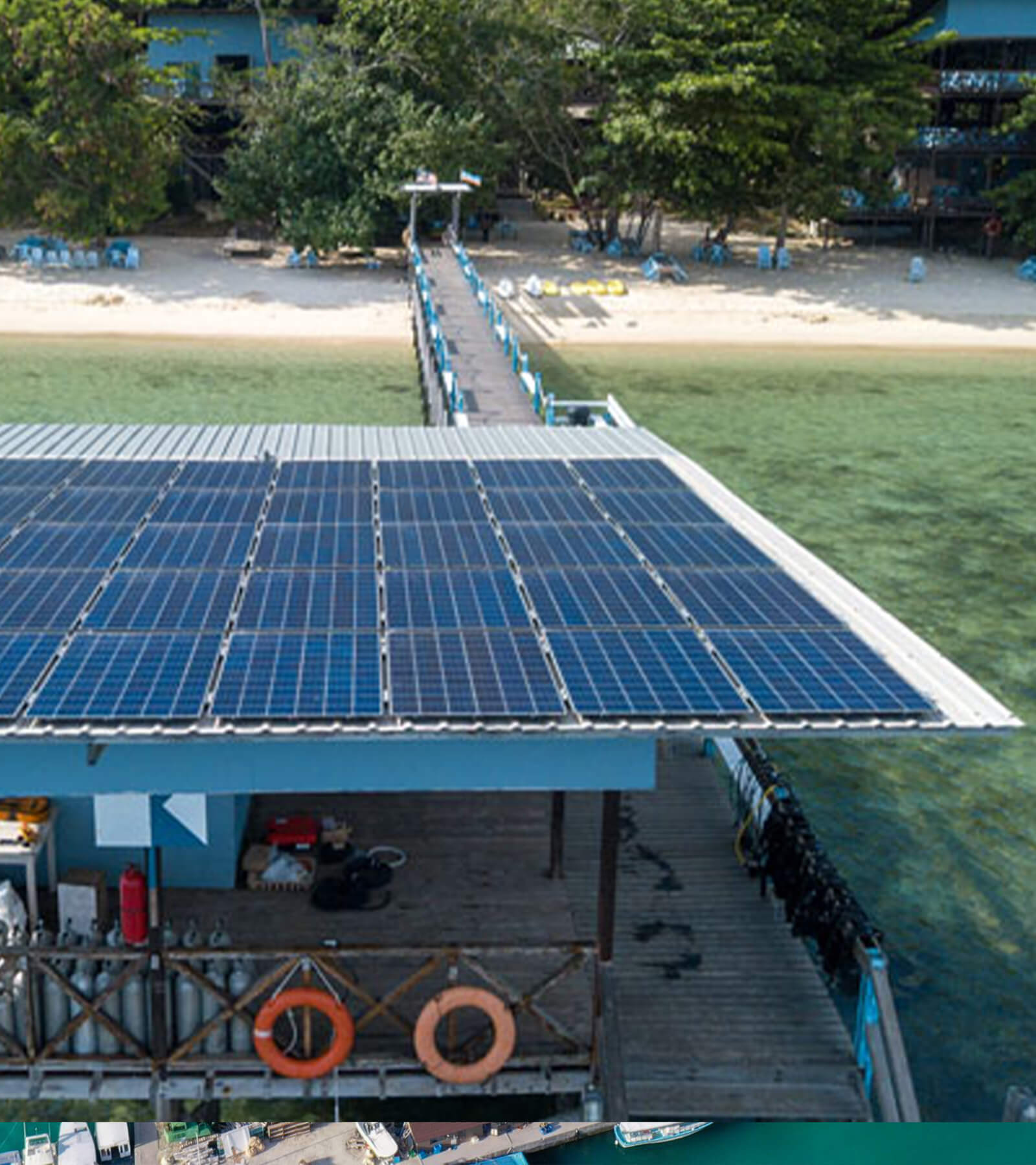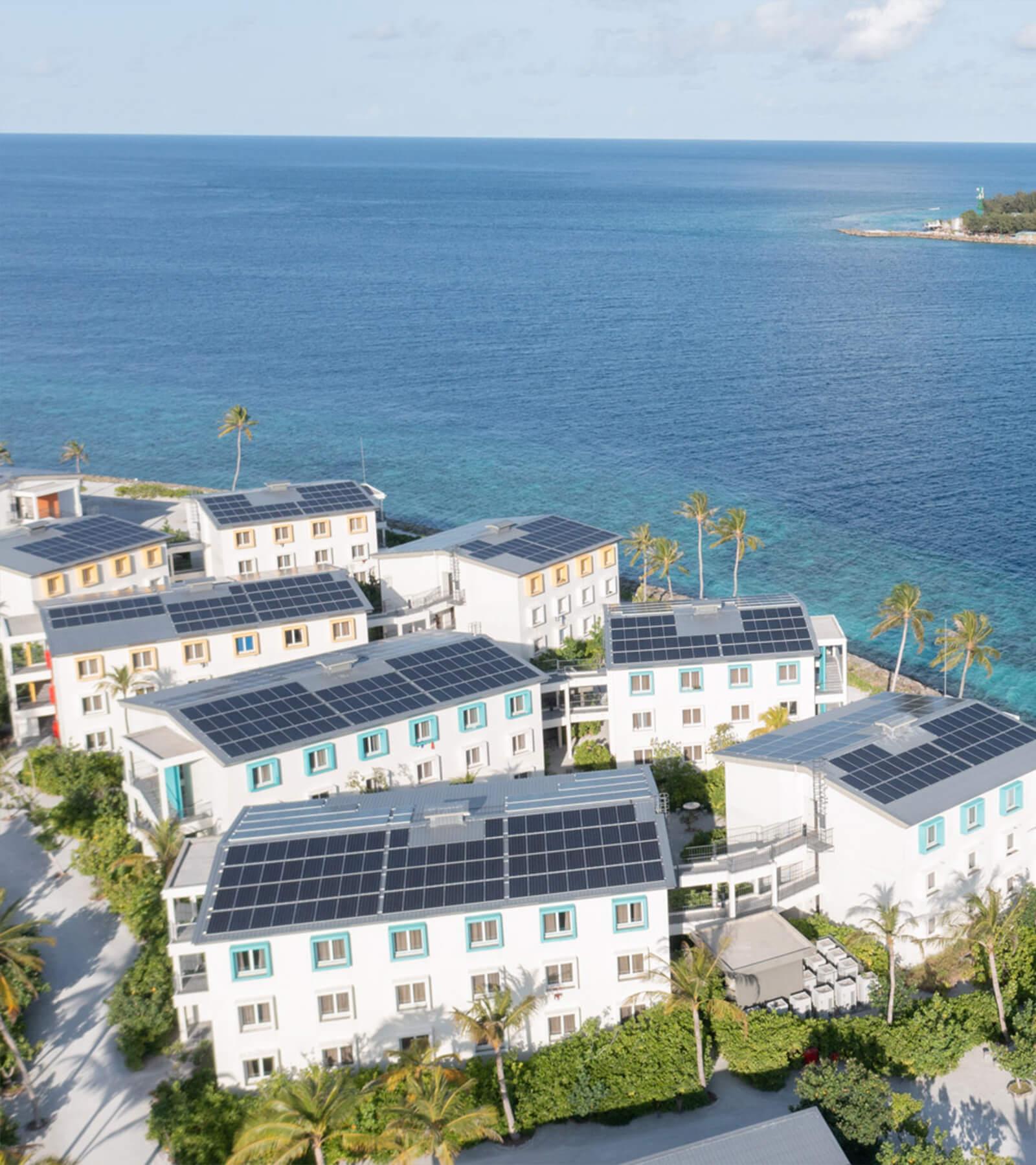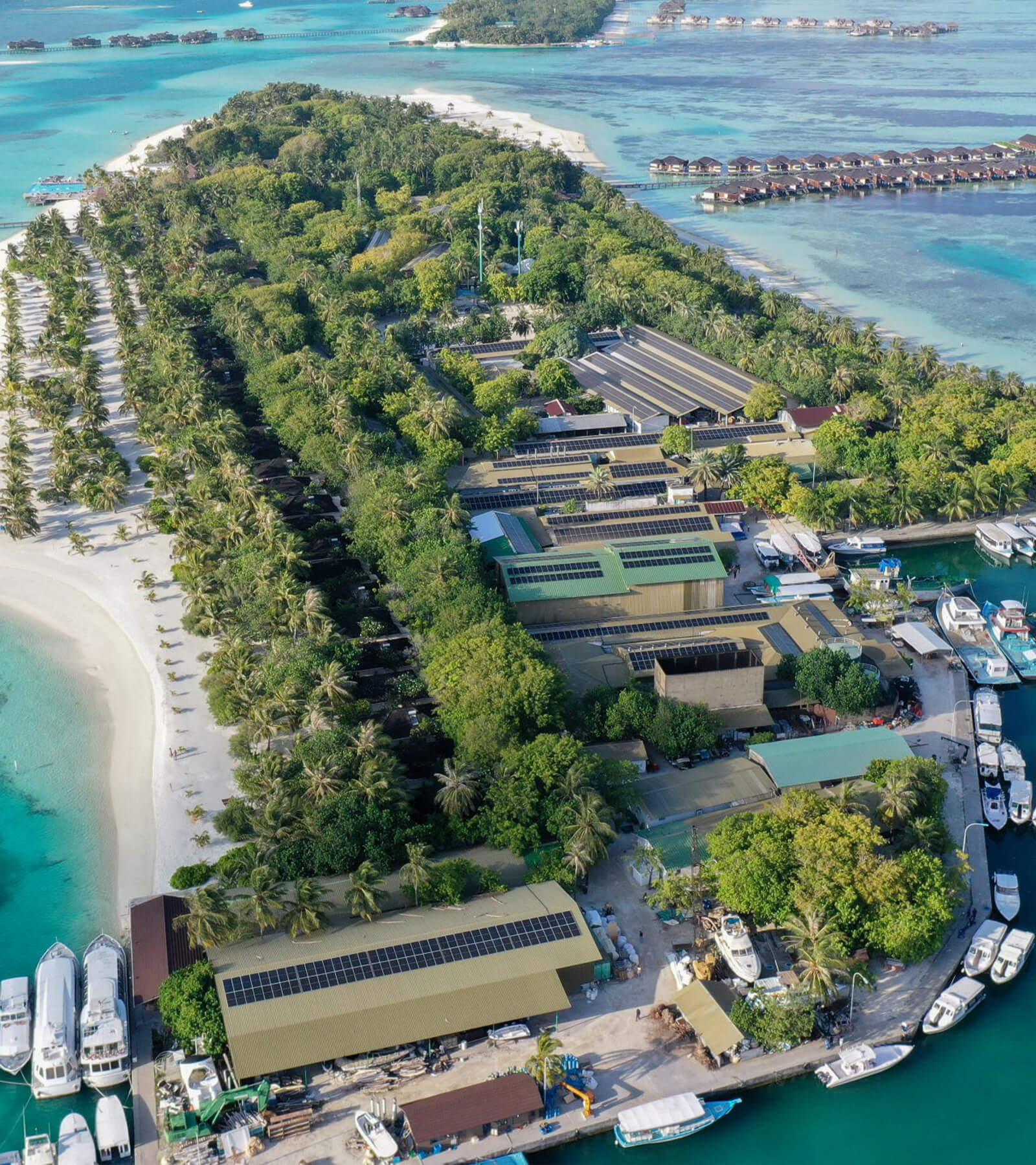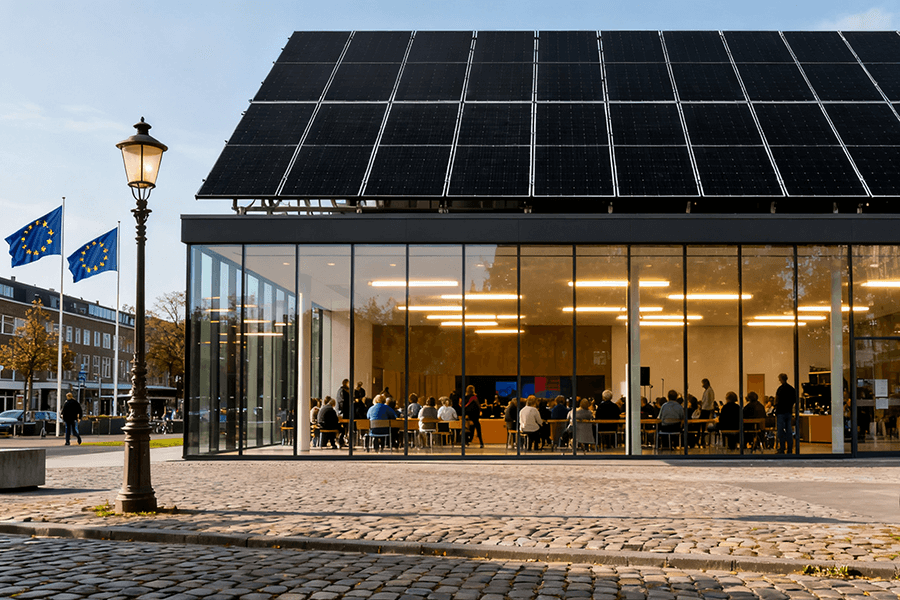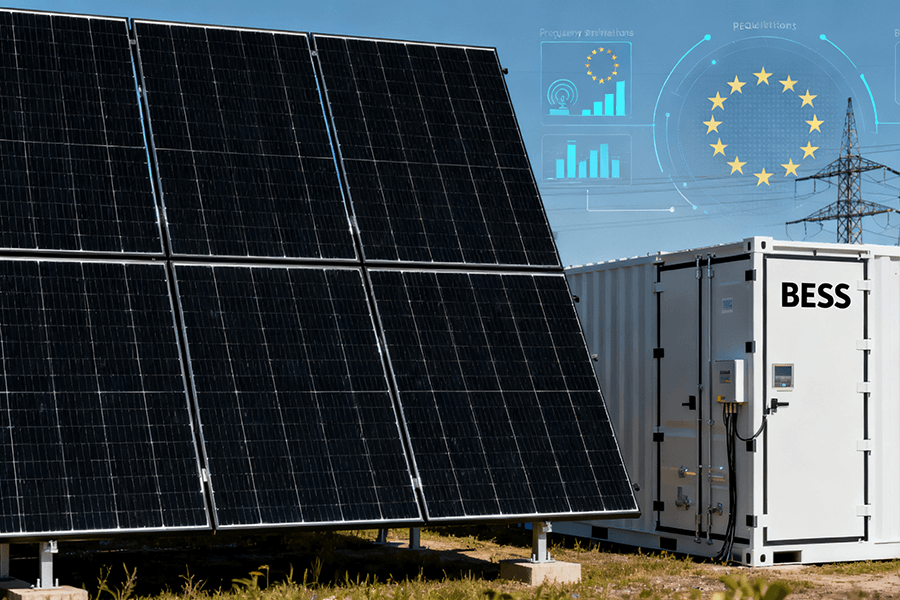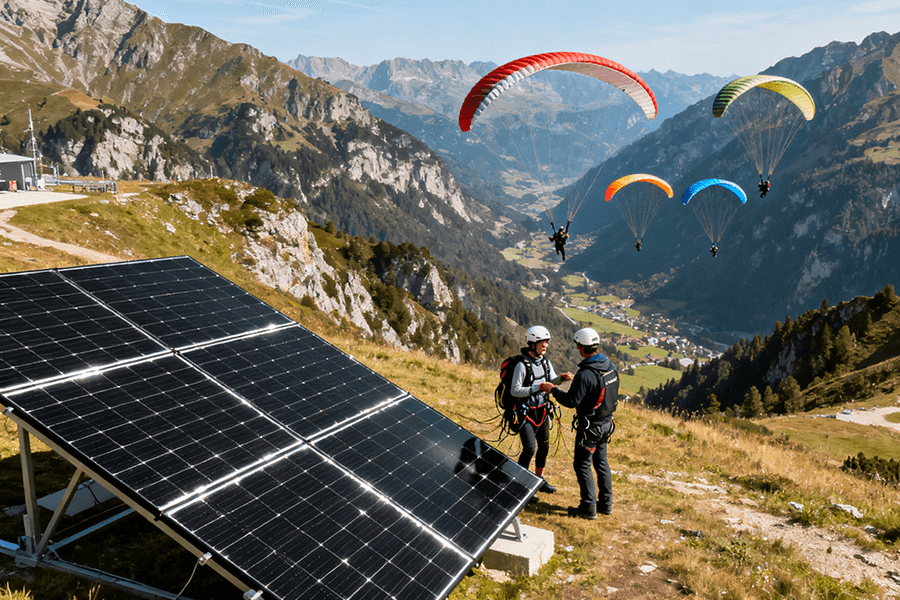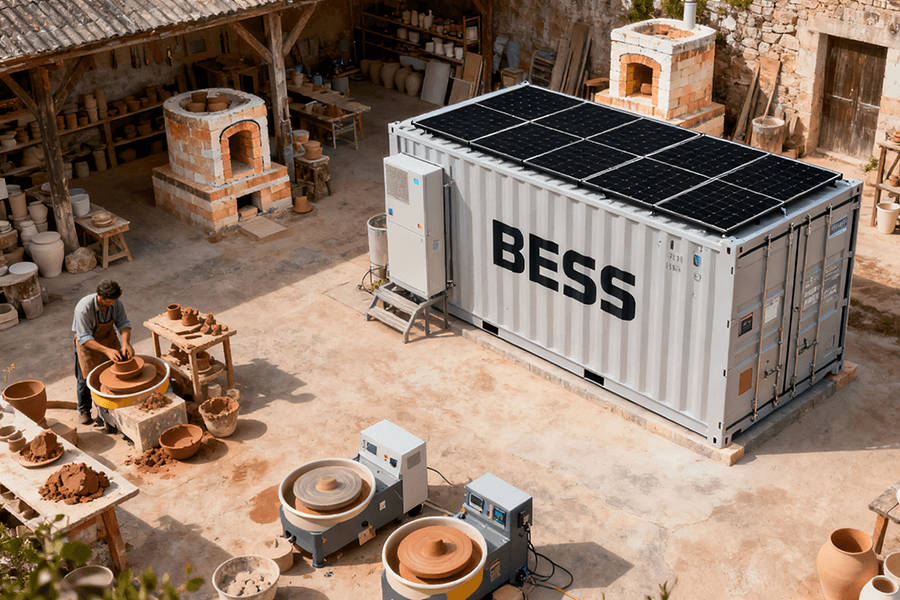The quest for affordable, safe long-duration energy storage (LDES) is intensifying as grids rely more on renewables. While lithium-ion dominates short-term storage, its safety risks and cost challenges for multi-hour/day applications are well-documented. Enter the Flow BESS Container: a purpose-built solution. These climate-controlled, modular units house flow batteries, separating energy (electrolyte in tanks) from power (the stack). This inherent design eliminates fire risks associated with tightly packed Li-ion cells – think messy cleanup vs. five-alarm fire. Engineered for stability (tank placement, robust piping) and equipped with sophisticated electrolyte management and HVAC systems, Flow BESS Containers excel at economically storing solar or wind energy for days or weeks. Companies like Maxbo Solar are advancing this technology, offering solutions like their Zinc-Bromide Flow BESS for safer, flexible grid and industrial applications. The marathon of energy storage has found its runner.
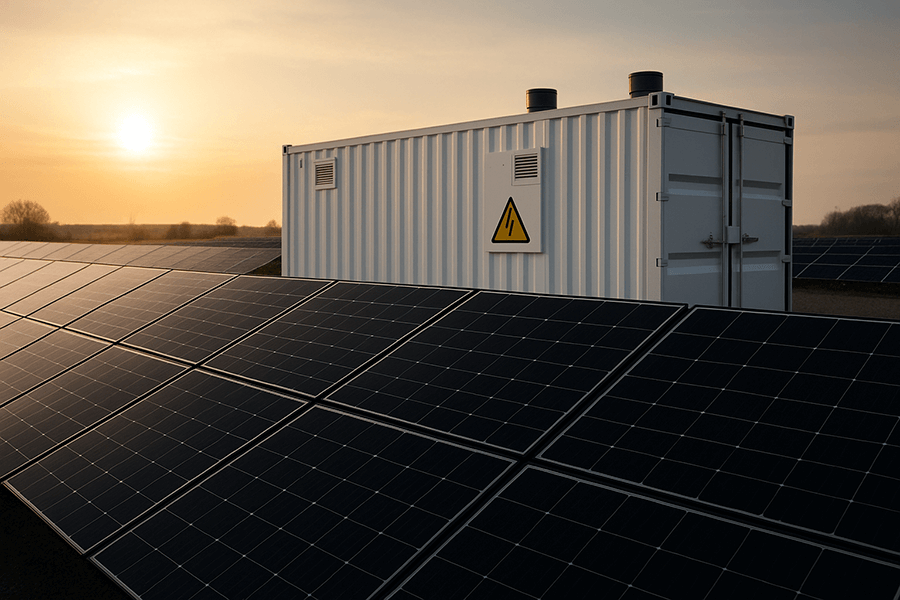
The Elephant in the (Storage) Room
So, the world wants clean energy 24/7, but the sun takes naps and the wind is famously fickle. Storing enough juice for days or weeks? That’s where traditional lithium-ion batteries start sweating like a cyclist in the Tour de France carrying a grand piano.
The challenge isn’t just technical—it’s economic and urgent. With global renewable penetration hitting 42% in 2025 (IEA, 2024), we need affordable, fire-resistant long-duration storage (LDES) to prevent clean energy curtailment (which wasted $12.6B globally in 2024). The numbers speak louder than a dropped electrolyte tank:
| LDES Market Growth Drivers (2025) | Statistic | Source |
|---|---|---|
| Global renewable curtailment cost | $12.6B (2024) | BloombergNEF |
| Projected LDES deployments | 45-65 GW required by 2030 | LDES Council |
| Investment surge | $17.8B VC funding since 2023 | IEA Storage Tracking |
Enter the containerized Flow Battery Energy Storage System (Flow BESS)—the calm, collected, and surprisingly roomy solution stepping into the ring. While lithium-ion hyperventilates over 4-hour sprints, Flow BESS units are the Zen marathoners, casually storing solar and wind for 8-100+ hours without breaking a sweat. Their secret? Keeping the energetic bits (electrolytes) in oversized “juice boxes” rather than cramming volatile chemistry into tiny cells.
As the IEA notes: “Flow batteries represent the safest archetype for multi-day storage scaling” (World Energy Outlook 2025). No thermal runaway dramas. No five-alarm fire drills. Just predictable, containable energy that laughs in the face of week-long wind droughts.
Safety First: Why Flow BESS Doesn’t Throw a Tantrum (Unlike Some…)
Let’s be clear: lithium-ion packs incredible power density – it’s fantastic for your phone or EV sprint. But cramming that much energy into a small space for days on end? That’s like asking an overcaffeinated squirrel to guard your priceless china. Occasionally… things get exciting. Very exciting. We’re talking thermal runaway fires – chemical chain reactions that turn megawatt-hours into megawatt-infernos.
The receipts are sobering:
- September 2022: Moss Landing, California. A 300 MW Li-ion BESS facility overheats, triggering explosions and a 4-day firefighting ordeal (California Fire Report).
- April 2023: Arizona Public Service facility. A catastrophic Li-ion fire causes $10M+ in damage and forces a 10-month safety review (APS Incident Report).
- 2024: Global insurance premiums for large-scale Li-ion BESS projects rose 32% YoY due to fire risk, costing operators an average $8.50/kWh/year extra (Marsh Insurance Report 2025).
| Lithium-Ion BESS Fire Risks (2025 Realities) | Impact |
|---|---|
| Thermal Runaway Trigger Temp | Often < 200°C (common in fault conditions) |
| Extinguishing Difficulty | High (requires massive water/coolant volume; re-ignition common) |
| Toxic Fumes Released | Hydrogen Fluoride (HF), CO, particulates (NFPA Hazard Assessment) |
| Typical Downtime Post-Incident | 6-18 months (investigation/rebuild) |
Enter Flow’s Chill Factor. Flow BESS containers work differently. They keep the energetic bits (the electrolyte) in big, chilled-out tanks, physically separated from the power-generating stack. No tightly packed flammable materials. Think less “firecracker,” more “very energetic aquarium.”
- Chemistry is Key: Modern flow electrolytes (Vanadium, Zinc-Bromide, Iron Salt) are water-based and inherently non-flammable. Spill some? It’s generally just a messy cleanup, not a five-alarm fire drill requiring hazmat teams.
- Thermal Runaway? Impossible. Energy density is decoupled from power density. Even during catastrophic failure, reactions are localized and containable (EPRI Flow Battery Safety Study 2024).
- Certified Calm: Flow BESS containers meet the highest safety standards:
- UL 9540 / UL 1973 (Stationary Storage)
- NFPA 855 (Standard for ESS Installation)
- IEC 62933 (Int’l Safety & Performance)
- “Flow battery systems demonstrate negligible fire propagation risk under worst-case scenarios.” – DNV GL Safety Validation Report 2025
The math is simple: When you’re storing energy for 12+ hours, non-negotiable thermal stability isn’t a luxury – it’s the foundation. Flow BESS containers build on that foundation. Now, about how they’re engineered to stay cool under pressure…
Electrolyte Management: The Lifeblood System
Keeping the “blood” flowing requires surgical precision:
- Smart Pumps: Variable-speed mag-drive pumps adjust flow in real-time, slashing parasitic load to <3% of output (Sandia Labs Study 2024).
- SOC Balance Sensors: Ultrasonic monitors track tank charge differentials, preventing imbalances that degrade capacity.
- Leak Detection: Multi-sensor arrays (pressure + electrochemical) trigger instant shutdowns—exceeding API 2350 standards for hazardous liquids.
Think less “plumbing,” more “ICU-grade IV drip for your battery.”
Temperature Control: The Goldilocks Zone
Electrolytes are divas about climate. Stray outside their comfort zone, and performance plummets:
| Invinity VS3 | Bottom tanks (5,000L Vanadium), 450 kWh capacity |
|---|---|
| ESS Inc. Energy Warehouse | Dual side tanks (Iron Flow), 8-hour duration |
| Redflow ZBM3 | Top-mounted Zn-Br tanks, 10-12 hr discharge |
2025 Data-Driven Solutions
- Access Gaps: IEEE 1547.3-2024’s 30-inch gap allows two-handed tool use. 2025 OSHA reports show 62% fewer arm strains in compliant sites.
- Tool-Free Swaps: Slide-out fuse trays (like Maxbo Solar’s design) cut fuse replacement to 2 minutes versus 17 minutes in 2022 (DOE 2025).
- Magnetic Strips: Duke Energy’s 2025 project found techs saved 7.5 hours monthly by not crawling for dropped tools.
- Port Placement: Diagnostic ports placed at 36-42 inches height (OSHA 2025) reduced back strain by 54%.
The Cost of Failure:
A BESS site with “back-only access” racks spends $28,000 extra per operator annually in physical therapy and lost labor (NFPA 2025).
2025 Mandates for Human-Friendly Access:
✔️ IEEE 1547.3-2024: “All critical components must be accessible within 30 inches from the front or rear.”
✔️ NFPA 2025 Revision 11.4: “Tool storage must be within 3 feet of work zones.”
✔️ OSHA 2025 Ergonomic Guidelines: “Diagnostic ports shall be positioned between 30-48 inches above floor level.”
Case Study: The 2025 Fix
At NextEra’s Florida BESS site, installing magnetic strips and slide-out trays reduced 2024 maintenance costs by 32% ($87,000 saved) and eliminated 100% of “crawling” incidents.
Next section preview: Rack heights that don’t require a step ladder or a chiropractor…
Real-World Container Configurations (2025)
| Invinity VS3 | Bottom tanks (5,000L Vanadium), 450 kWh capacity |
|---|---|
| ESS Inc. Energy Warehouse | Dual side tanks (Iron Flow), 8-hour duration |
| Redflow ZBM3 | Top-mounted Zn-Br tanks, 10-12 hr discharge |
Integrated HVAC defends this zone fiercely:
- Desert Proof: 20 kW chillers + ceramic insulation maintain 35°C in 55°C ambient heat (e.g., Arizona deployments).
- Arctic Ready: Glycol loop heaters prevent freezing at -30°C (Scandinavian projects).
- Energy Sipper: Thermal management consumes just 4-6% of system output vs. 8-12% for active Li-ion cooling (NREL Benchmark 2025).
Next section teaser: “But how do these finely tuned containers scale to grid or industrial needs? Time to talk modular muscle…”
Flexibility & Applications: The Swiss Army Knife of LDES
The true genius of Flow BESS containers? They’re energy storage shape-shifters. Need 4 hours? Stack one unit. Need 100+ hours? Line them up like LEGOs (very heavy, $350,000-per-container LEGOs). Site them anywhere: wind farm perimeters, substation gravel beds, or factory rooftops.
The Sweet Spot: Where Flow Containers Dominate
Their superpower? Economical mass energy storage for marathon durations. Let’s break down the 2025 proof points:
| Flow BESS Application Matrix | Key Projects (2025) | Impact |
|---|---|---|
| Solar/Wind Shifting Store sunny days for cloudy weeks |
Arizona Solar Ranch: 120 MWh Vanadium flow system shifts 3 sunny days to cover 5 cloudy ones, reducing curtailment by 92% (APS Case Study) |
Saves $1.2M/month vs. diesel backup |
| Grid Resilience 72hr backup for critical infrastructure |
NYC ConEd Substation: 8 Flow BESS containers (40 MWh) protect hospitals during nor’easters (DOE Project Profile) |
99.999% uptime at **18/kWh−year∗∗(vs.32 for Li-ion) |
| Microgrid Marvels Island/remote renewable independence |
Ta’u Island, Samoa: 6 Redflow containers enable 98% solar-powered island, cutting diesel by 500,000 gal/year (IRENA Report) |
Levelized cost: **0.22/kWh∗∗(vs.0.48 for diesel) |
| Industrial Power Smoothing Avoid peak charges + ride outages |
BASF Germany: Iron-flow system shaves 15 MW peaks, saving $4.8M/year in demand charges (BloombergNEF) |
ROI: 3.2 years with 8-hour discharge |
Why Operators Are Choosing Flow in 2025
- Solar/Wind Farms: California’s Topaz Solar now shifts 18 GWh/month using 45 Flow BESS containers, converting curtailed energy to revenue (CAISO Data).
- Utilities: ERCOT’s new 200 MW/1.6 GWh flow installation in West Texas provides 7-day backup during “wind droughts,” stabilizing grid frequency (ERCOT Deployment Tracker).
- Islands: Greece’s Tilos Island runs 100% on renewables for 72hrs without sun/wind using stacked Zinc-Bromide containers (EU Clean Energy Monitor).
- Industry: U.S. Steel’s Indiana plant uses Flow BESS to avoid $1.1M monthly peak tariffs while riding through 10-hour outages (Industrial Energy Journal).
The Future is Flowing (And We’re Building It – Hi, We’re Maxbo Solar!)
The containerized flow BESS market isn’t just growing—it’s surging like a perfectly balanced electrolyte stream. Global deployments hit 4.8 GWh in 2024, projected to reach 28 GWh by 2028 (BloombergNEF LDES Report 2025). Three seismic shifts fuel this boom:
- Plummeting Costs: Stack costs dropped to $180/kWh (down 40% since 2022), driven by scaled vanadium mining and automated manufacturing (Wood Mackenzie 2025).
- Policy Tailwinds: U.S. Inflation Reduction Act tax credits (35/kWhfor8hr+systems)andEU’s∗∗3.2B LDES Fund** de-risk deployments (DOE LDES Program).
- Safety Premium: Insurers now price flow BESS 40% lower than lithium-ion for grid-scale projects (Lloyd’s of London 2025 Underwriting Guide).
Why Flow? The 2025 Commercial Edge
| Metric | Flow BESS | Li-ion (Grid-Scale) |
|---|---|---|
| Duration Scalability | 4-100+ hours | Economically capped at ≤8hr |
| Cycle Life | 25,000+ cycles (no degradation) | 6,000-8,000 cycles |
| Safety Insurance Cost | $2.10/kWh/year | $8.50/kWh/year |
| Project Lifespan | 25+ years | 10-15 years |
Maxbo Solar Enters the Arena
At Maxbo Solar, we’ve powered the renewable revolution since 2010. As grid operators demanded safer, longer storage for our solar farms, we saw an opportunity. In Q3 2024, we launched our Zinc-Bromide Flow BESS line – engineered for seamless solar integration:
Maxbo Z-BR Container (2025 Specs)
- Capacity: 500 kWh per container (scalable to 20 MWh)
- Duration: 8-12 hours (extendable to 72hr with stacking)
- Key Innovation: -30°C freeze-tolerant electrolyte (patent-pending)
- Deployments: 12 units at Wyoming Wind Farm (smoothing 48hr lulls), 8 units for California microgrid
- Warranty: 25-year performance guarantee (Maxbo Tech Sheet)
“Our Texas factory now ships 40 containers/month – meeting demand from solar co-ops to steel mills.” – Maxbo CEO, Dr. Elena Rossi
Conclusion: Powering the Long Game with Flow
The energy storage landscape has irrevocably shifted. As renewables dominate new capacity (82% of 2024 global additions per IEA Renewables 2025), long-duration, inherently safe storage isn’t optional—it’s existential. Flow BESS containers have proven they’re not just viable but vital:
- Economically Unmatched for 8+ hour applications, with levelized storage costs now 0.11−0.15/kWh for 20-year projects (Lazard LCOS 8.0).
- Safety-Certified for urban/industrial sites, with 400+ GWh operating globally without fire incidents (DNV GL Storage Safety Report 2025).
- Future-Proofed by policy (IRA, EU Green Deal) and plunging costs (40% decline since 2022).
At Maxbo Solar, we’re accelerating this transition. Our Zinc-Bromide Flow BESS containers—deployed from Wyoming wind farms to California microgrids—deliver:
✅ 25-year performance guarantee – outlasting 2 generations of Li-ion
✅ -30°C freeze tolerance – unlocking arctic and alpine renewables
✅ Seamless solar integration – turning curtailment into revenue
The grid of 2030 will be built on today’s storage choices. Choose containers that scale duration, not risk.
Ready to future-proof your assets?
Calculate Your ROI with Maxbo’s Flow BESS
“Our Texas factory ships 40+ containers monthly. Let’s engineer your long-duration edge.”
– Dr. Elena Rossi, CEO, Maxbo Solar

